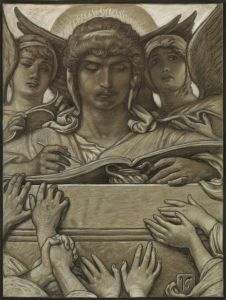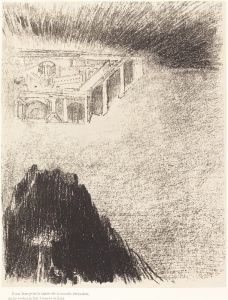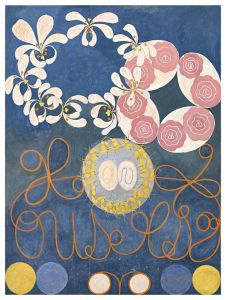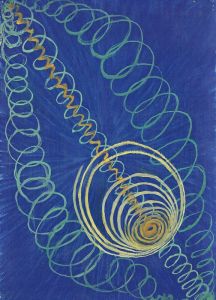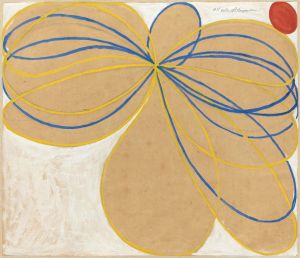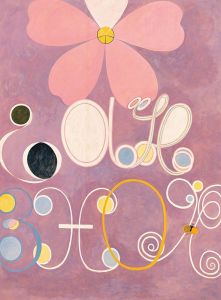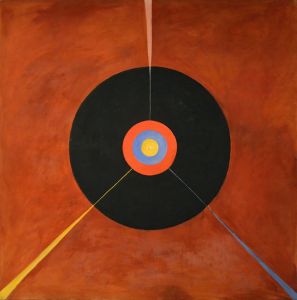
The Ten Largest, No. 6
A hand-painted replica of Hilma af Klint’s masterpiece The Ten Largest, No. 6, meticulously crafted by professional artists to capture the true essence of the original. Each piece is created with museum-quality canvas and rare mineral pigments, carefully painted by experienced artists with delicate brushstrokes and rich, layered colors to perfectly recreate the texture of the original artwork. Unlike machine-printed reproductions, this hand-painted version brings the painting to life, infused with the artist’s emotions and skill in every stroke. Whether for personal collection or home decoration, it instantly elevates the artistic atmosphere of any space.
The Ten Largest, No. 6, Adulthood (1907) is a painting by Swedish artist Hilma af Klint, created as part of her groundbreaking series The Ten Largest. This series, completed in 1907, is one of the most significant works in af Klint's career and is considered a cornerstone of her contributions to abstract art. The series consists of ten large-scale paintings, each representing a different stage of human life, from childhood to old age. No. 6, Adulthood specifically symbolizes the phase of maturity and growth in the human life cycle.
Hilma af Klint (1862–1944) was a pioneering artist and mystic whose work predates the recognized emergence of abstract art by several years. She created The Ten Largest as part of a larger body of work called Paintings for the Temple, a series of 193 paintings and drawings that she believed were guided by spiritual forces. Af Klint was deeply influenced by her involvement in spiritualism, Theosophy, and anthroposophy, which shaped her artistic vision and led her to explore themes of existence, spirituality, and the interconnectedness of life.
The Ten Largest, No. 6 is notable for its vibrant use of color, intricate patterns, and symbolic forms. The painting is dominated by swirling organic shapes, floral motifs, and geometric elements, rendered in shades of orange, blue, and pink. These elements are thought to reflect af Klint's interest in the spiritual and metaphysical dimensions of life. The large scale of the painting—measuring approximately 3 meters in height—was unusual for the time and emphasized the monumental nature of the themes she sought to convey.
Af Klint's work was largely unknown during her lifetime, as she believed the world was not ready to understand her art. She stipulated that her works should not be shown publicly until at least 20 years after her death. It was not until the late 20th century that her contributions to abstract art began to receive widespread recognition. Today, The Ten Largest series is celebrated as a pioneering achievement in modern art, challenging traditional narratives about the origins of abstraction.
The Ten Largest, No. 6 is housed in the Moderna Museet in Stockholm, Sweden, as part of the Hilma af Klint Foundation's collection. The painting continues to be studied and admired for its innovative approach to abstraction and its profound exploration of human existence.





